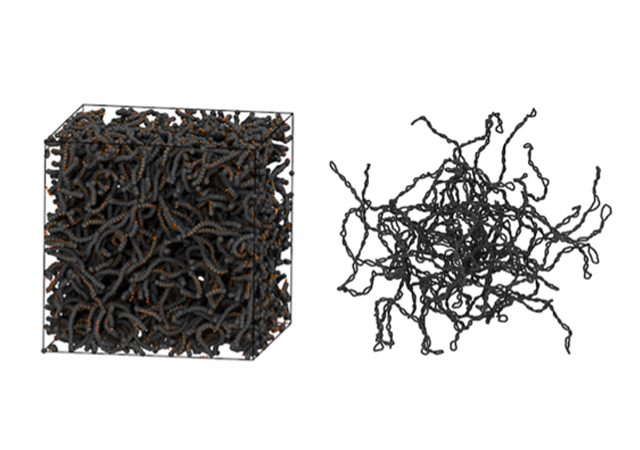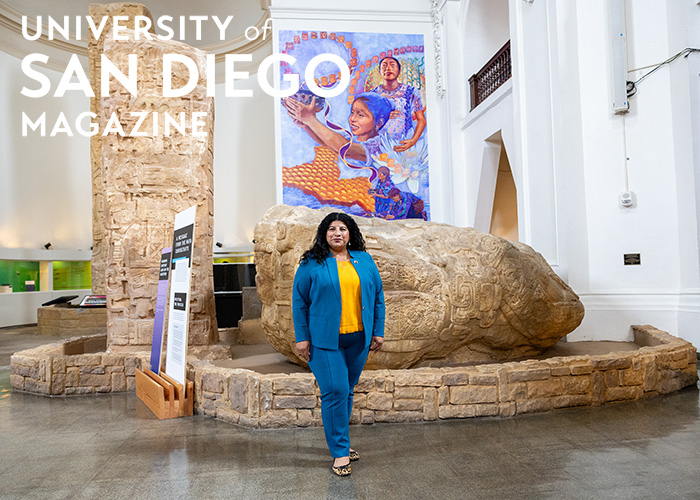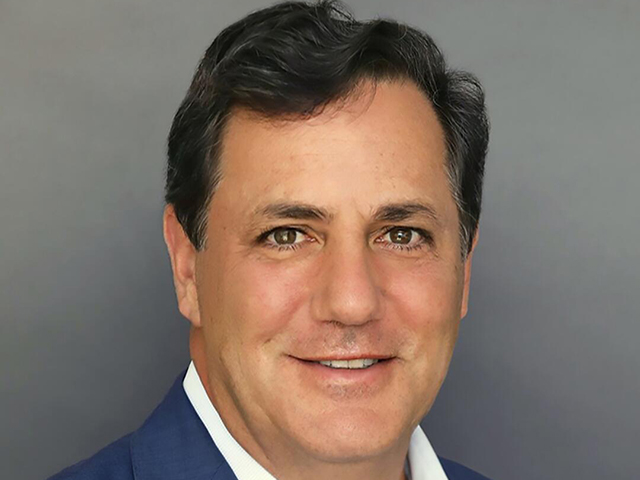USD Professor Studies How The Shape Of Our DNA Could Help Design Futuristic Materials
 Example of DNA properties
Example of DNA properties Dr. Rae Robertson-Anderson, chair and professor of physics and biophysics, is studying how the shape of our DNA could be used to create autonomous, futuristic materials such as, self-healing bridges or responsive bullet proof vests, that can react to outside elements on their own -- just like our DNA does.
“Current man-made [infrastructure] materials can not change their properties on their own -- but DNA does this all the time. That is the ultimate goal with this research - to use the shape of DNA to create adaptable and responsive materials. DNA can change its shape on demand using specialized proteins (enzymes) that can snip, cut and rearrange the DNA. If we understand how the material properties change when the DNA shape changes we can create programmable self-driven materials,” said Dr. Rae Robertson-Anderson, chair and professor of physics at the University of San Diego.
Dr. Robertson-Anderson collaborated with three other researchers from Edinburgh, Scotland and Vienna, Austria to study this idea and was recently published in Science Advances for research titled, ‘Topological tuning of DNA mobility in entangled solutions of supercoiled plasmids.’ Dr. Robertson-Anderson credits collaborations, which led to research like this, as essential for advancing scientific knowledge.
“In physics research, there’s experiment and theory,” said Dr. Robertson-Anderson. “We all have our areas of expertise. You can advance science in profound ways when you bring together experiment and theory and cross disciplines and expertises. When we’re all doing research in our own labs and our own shilohs, you just can not advance knowledge as much,” she added.
This collaboration led to new research that dove into the physical properties of our DNA. Our DNA is often supercoiled - looking almost like a tangled phone cord or twisted up rubber band. But enzymes can convert it to a relaxed loop state without tangles to respond to the needs of our cells. These different shapes lead to viscoelasticity - a property that allows DNA-based materials to behave both like a solid or a fluid depending on environmental cues. This property - which humans can program by changing the shape of the DNA - can be harnessed to develop new, futuristic materials that could be useful in everything from tissue regeneration to infrastructure repair.
“Think of a bullet proof vest, if it could be very soft but then when something really fast, like a bullet, hits it, it could tense up. But if you gently tapped it, it could flow really easily,” said Dr. Robertson-Anderson.
With this newfound research, the next step for the researchers, like Dr. Robertson-Anderson, is to combine different DNA shapes and enzymes to develop programmable materials that can react to outside elements, autonomously, and help us with our everyday lives --- material that we could see in the not-so-distant future.
Contact:
Elena Gomez
elenagomez@sandiego.edu
(619) 260-2739



